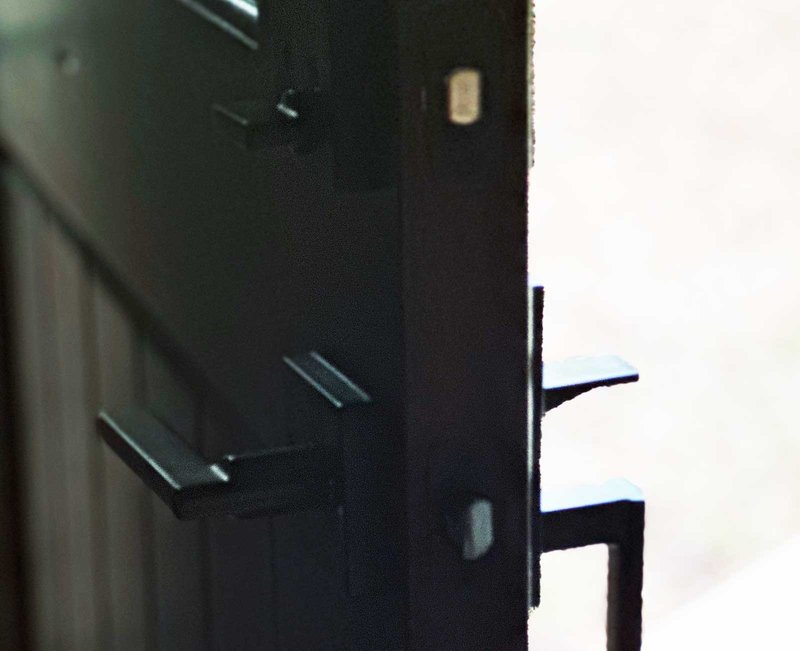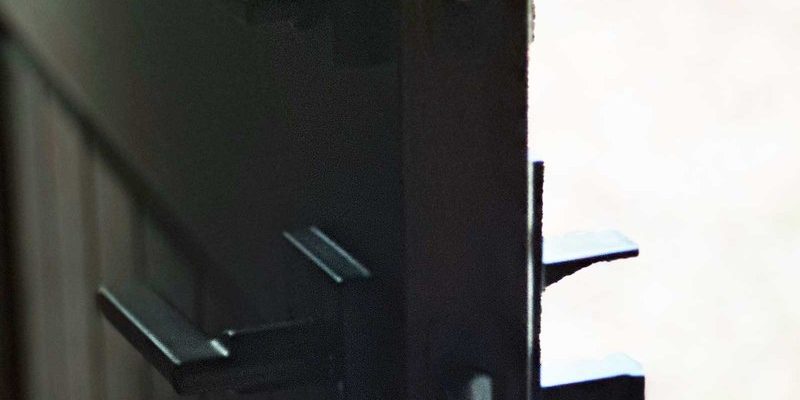
Here’s the thing: humidity messes with wood like a sponge left in a puddle. Even the sturdiest door from trusted brands like Therma-Tru, Masonite, or Pella can be affected. If you’re suddenly struggling to secure your entryway, you’re not alone. Let’s break down why this happens, what you’re really up against, and how you can fix it—without turning your afternoon into a sweaty, frustrating wrestling match with your front door.
Why Humidity Makes Your Exterior Door Hard to Latch
When people talk about “sticky doors,” humidity is almost always the villain. But why does humidity create so much trouble? Think about wood like you would a thick sponge. It soaks up water from the air, especially if you live somewhere with muggy summers or wild weather swings.
In high humidity, wood fibers swell. This swelling isn’t always obvious to the eye, but it can add just enough bulk to force the door against the frame. Suddenly, the latch struggles to catch, and it feels like someone adjusted your door overnight. Even steel or fiberglass doors can have wood cores or jambs that swell, causing similar headaches.
Here’s another angle: sometimes, the door frame itself shifts slightly with the extra moisture. If the frame expands or warps a bit, the latch might no longer line up perfectly with the strike plate. Over time, this leads to scraping, sticking, and that unsatisfying feeling when you try to lock up for the night.
Common Signs of a Humidity-Related Door Latch Problem
How do you know if humidity is the real troublemaker? Start by noticing the little changes. You might feel extra resistance when pushing or pulling the door closed, or hear a new scraping sound where there wasn’t one before. Sometimes, the latch just barely misses the strike plate, or you find yourself yanking or pushing with more force than usual.
Look for these giveaways:
- The door drags or rubs along the top, bottom, or latch side of the frame.
- You need two hands (and maybe a hip bump) to force it shut or latch it.
- The latch bolt looks misaligned with the strike plate—maybe it sits too high, too low, or doesn’t fully engage.
- After a rainy or humid week, the problem suddenly appears or worsens.
If your door worked fine last fall, but now you’re dealing with trouble during summer or after storms, humidity is the prime suspect.
Simple First Steps Before Grabbing Your Toolbox
Before you start unscrewing anything, there are a few quick checks that might save you a lot of effort. Sometimes, the solution is simpler than you think.
First, wipe down the door’s edges and the strike plate. You’d be surprised how much grime, pollen, or old paint can build up, making the fit even tighter during humid months. Next, check that the door hinges are tightly screwed and haven’t started sagging. If the hinges are loose, the door can drag more when it swells—intensifying the problem.
If the door is painted or sealed, look for spots where the finish is wearing thin or missing. Exposed wood grabs moisture more quickly, making it more likely to swell. Even a beautiful brand-name door from Andersen or JELD-WEN can run into trouble if the protective layers are damaged.
You might be tempted to sand or shave down the sticky edge right away. Honestly, don’t—at least not before you rule out a quick fix or weather-related swelling that might shrink back again.
Checking Door Alignment and Hinge Issues
If the quick checks didn’t do the trick, it’s time to look closer at alignment. When a door won’t latch in humid weather, sometimes it’s shifted slightly because the frame or hinges have moved.
Open the door and watch how it swings. If it rubs at the top or bottom, check all the hinge screws. Over time, and especially when wood swells, screws can loosen, letting the door sag and misalign. Tighten these with a screwdriver (not a drill, which can strip the holes), starting with the top hinge—this often corrects minor sagging and helps the latch line up better.
Look at the gap between the door and the frame. If one side is tight—but the other has space—the door might need to be realigned. Sometimes, you can fix this by swapping one of the short screws in the upper hinge for a longer 3-inch screw. Drive it into the underlying wall stud. This little trick pulls the hinge—and the entire door—closer to the frame, lining things up without major repairs.
If the hinges themselves are rusty or bent, swap them out for new ones. While you’re at it, add a dab of lubricant to keep things swinging smoothly, especially in humid conditions.
How to Adjust the Strike Plate for a Better Latch
Let’s say the door is swinging as it should, but the latch still won’t click in reliably. Chances are, humidity has shifted your strike plate just enough to throw things off. Luckily, this is another beginner-friendly fix.
Here’s what you can try:
- Mark the latch’s position. Close the door slowly and see where the latch hits the strike plate. If it’s too high or low, use a pencil to mark the spot.
- Loosen the strike plate screws. Sometimes you can nudge the plate up or down a few millimeters to match the shifted latch.
- If needed, widen the strike plate hole. Use a metal file or small chisel to enlarge the opening slightly so the latch can catch, even when the wood is swollen.
- Add a shim behind the strike plate if it’s sitting too deep in the frame.
Honestly, these tiny tweaks can save you from sanding or planing the door. It’s a lot like fine-tuning a bike chain instead of replacing the whole thing.
When to Sand or Plane Your Door (and How to Do It Safely)
If you’ve tried the easy fixes and your exterior door is still stubborn in high humidity, a little woodworking might be in order. But before you grab a sander, remember: wood expands in the summer and contracts in the winter.
If you sand off too much now, you might end up with an annoying draft or gap when things dry out. That’s why it’s smart to take just a tiny bit off—enough so the door closes and latches, but not so much you regret it in December.
Here’s how to do it:
- Close the door and mark where it sticks using painter’s tape or a pencil.
- Remove the door from its hinges (a friend is helpful here) and lay it flat on sawhorses.
- Use a hand plane or sanding block to remove just the problem spots—usually on the latch side or bottom edge.
- Test fit the door often; don’t get carried away.
- After sanding, seal any exposed wood with exterior paint or a clear finish to block future moisture.
Don’t have the tools? A local handyman or carpenter can handle this for less than you might expect.
Using Weatherstripping, Seals, and Dehumidifiers to Prevent Problems
Once your door is latching smoothly again, it’s worth taking steps to keep humidity from causing trouble next season. Most modern doors come with weatherstripping, but over time, it gets worn, cracked, or pulled loose.
Check the foam or rubber seals around the edges. If they’re missing or damaged, replace them. Good weatherstripping doesn’t just keep out drafts—it can help slow down moisture transfer, protecting both the door and the frame from swelling.
In extremely humid zones (hello, Florida and the Gulf Coast), some people keep a small dehumidifier near the entryway during peak summer. It might sound over-the-top, but bringing the indoor humidity down even 10% can make a night-and-day difference in how your doors and windows operate.
And if your door is unfinished or the paint is chipping, give it a fresh coat before the next humid spell. Paint or varnish is more than decoration—it’s the armor that keeps wood from soaking up every molecule of moisture.
When It’s Time to Consider a Replacement Door
Sometimes, despite your best troubleshooting, an exterior door just won’t cooperate anymore. If it’s warped, cracked, or has years of swelling and shrinking under its belt, it might be time for an upgrade.
Modern exterior doors, especially those from brands like ProVia or Pella, offer advanced moisture-resistant cores, fiberglass skins, and weather-sealed frames that fight humidity better than older, solid-wood models. Steel and composite doors are often less prone to swelling, but even these need proper weatherstripping and sealing.
Here’s what to consider:
- Is the frame itself warped or damaged? Replacing the door without fixing a bad frame won’t solve the latch issue.
- Are you seeing daylight through cracks, or feeling drafts even after repairs?
- Is the wood soft, rotten, or moldy in places? This points to moisture damage beyond a quick fix.
A replacement door is an investment, but it pays off in hassle-free operation, energy savings, and—let’s be honest—peace of mind every time you lock up for the night.
Closing Thoughts: Keep Humidity from Winning the Door War
No one wants to wrestle with an exterior door that refuses to latch, especially when humidity is high and patience is short. Thankfully, most latch problems in muggy weather come down to swelling wood, loose hinges, or a misaligned strike plate—things you can usually fix with a screwdriver, a file, or a little sandpaper.
If you catch these issues early, take a gradual approach, and protect your door with good paint and weatherstripping, you’ll save yourself a world of frustration. But if you’ve tried everything and your door still won’t cooperate, don’t feel bad—sometimes, even the best doors need replacing after years of battling the elements.
The key is to not let humidity ruin your day—or your security. With a few careful adjustments, your door can get back to doing its job: keeping your home comfortable, safe, and a lot less sticky.
